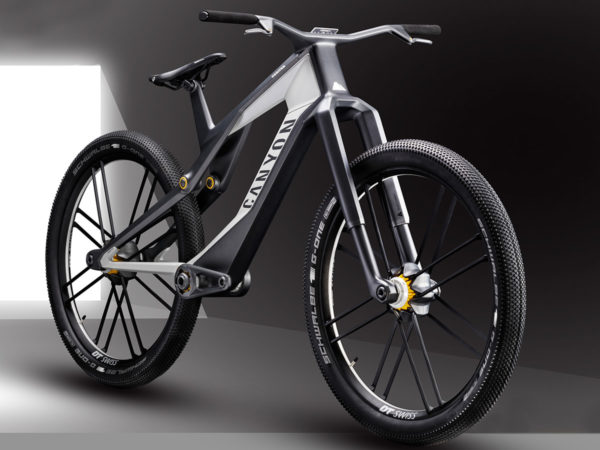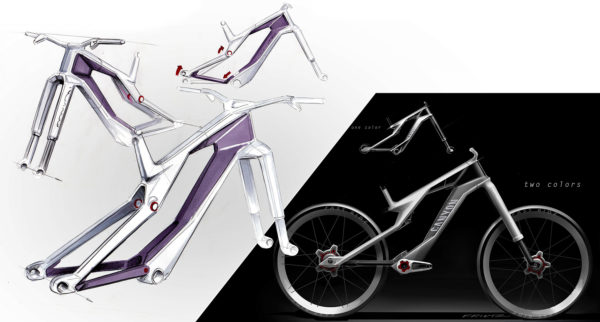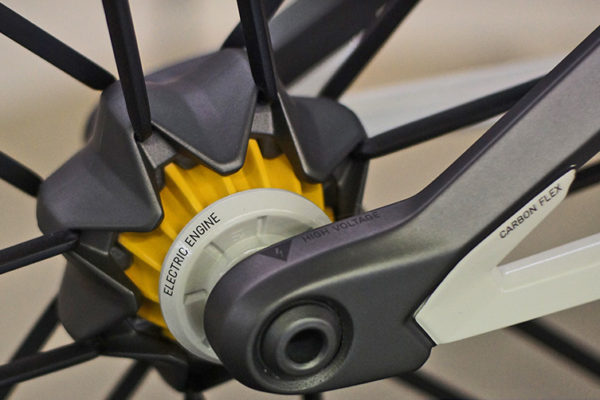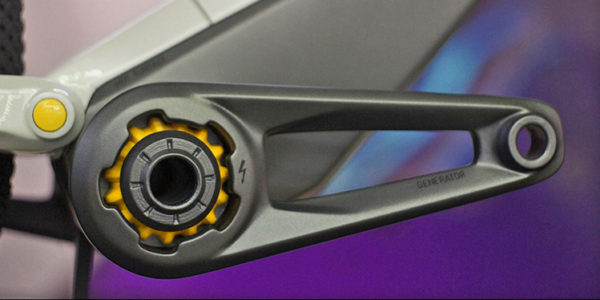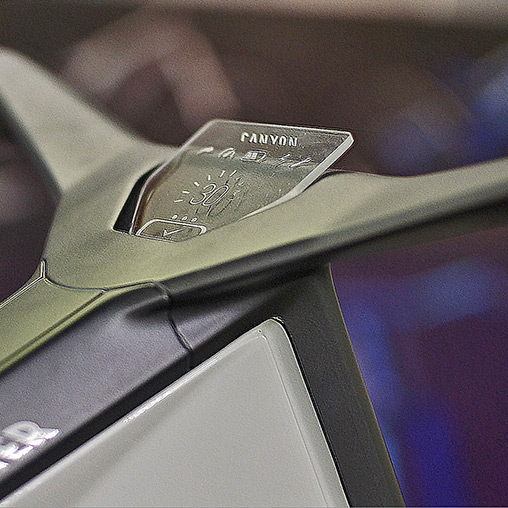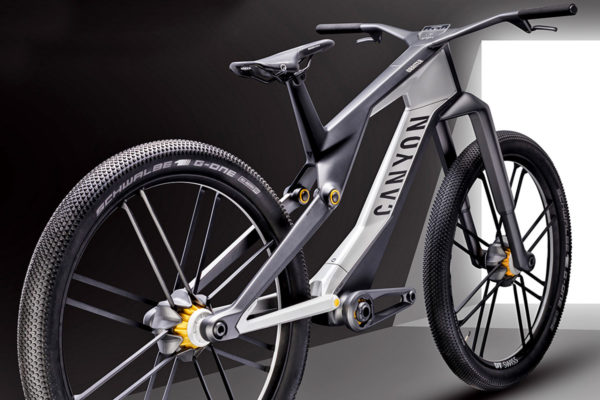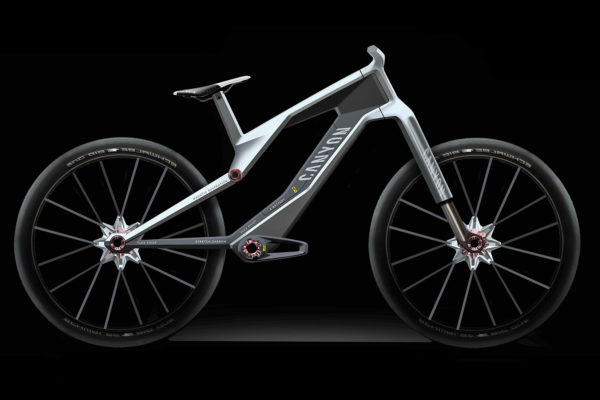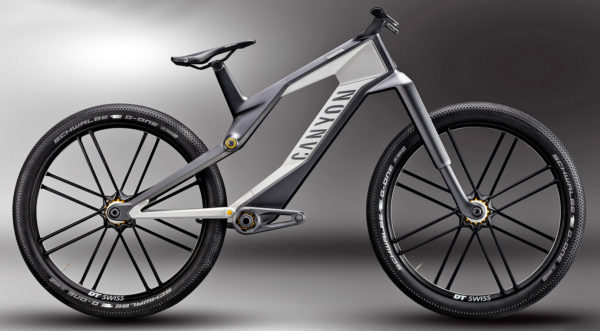
We’ve seen plenty of interesting (and at times way out there) concept bikes from Canyon, and the latest from their young designer Daniel Frintz is no different. In what looks like the latest iteration, or rather evolution of their MRSC magnetic suspension idea we saw back in 2014, the new Orbiter concept bike takes the magnets and electronically controlled suspension off-road and throws in an e-bike drive system for good measure. Details are pretty limited on what is clearly only a concept bike for now and not a functional prototype, but Canyon devotes a good bit of engineering time to turning these ideas into rideable bikes, so we’ll be keeping our eyes open as the concept develops. Get a closer look and check out some details after the break….
Calling the Orbiter a concept e-bike is giving it short shrift, as the unique magnetic suspension design is its most eye-catching element. This concept goes beyond the electronic tech that controlled Canyon’s Projekt MRSC full-suspension road bike prototype, which worked by electronically changing the resistance of a fluid inside a pivot bearing to allow Canyon to effectively be able to open or lock-out suspension movement based on on-board sensor inputs and a built-in electronic suspension controller, rebounding back with a paired leaf spring.
Frintz’s concept on the other hand essentially puts an electric motor around each pivot and uses magnetic resistance to change the freedom of the pivot to move, and can capture input energy like a generator and return it as a motor to effectively rebound the suspension, all controlled by sensors detecting and responding to impact forces.
Looking at the suspension movement itself (or apparent lack thereof), the design appears like it must use a single pivot arrangement with a flexible link (labeled Carbon Flex) between the chainstay and seatstays being the only opportunity for movement at the rear wheel, possibly augmented by the ability of the chainstay to extend down & backwards.
The unclear rear suspension design is no reason to discount the eMTB propulsion though, as it looks to place smaller than normal electric drive motors in both the front & rear hubs. That would be an interesting solution delivering a better weight balance and perhaps less of an impact to the overall feel of the bike, combined with the ability to optimize the distribution of power to either wheel on-the-fly. Our reluctance would probably be that the times when we have most seen problems in maintain traction on an eMTB have been on steep, loose ascents where we would actually want the e-assist but would have great difficulty getting weight over the front wheel to maintain grip.
It’s crankset would deliver power to the wheels in a fly-by-wire method, generating power at the cranks and distributing it as needed to either or both wheels.
The concept bike also gets an integrated display that would likely control the entire system, including what we’re told is some for of traction control. It is the most obvious point where we see that this bike is far from functional, but with Canyon’s previous foray into turning integrated electronics into reality, that’s probably something they wouldn’t have any trouble solving when the time comes.
Frintz seems to have targeted this bike as an urban gravity bike – something like a pedal version of a Supermotard, with a set of fat Schwalbe tires made for fast rolling & grip on the hardpack and a saddle & bar position that wouldn’t look out-of-place on a DH bike. We’re not sure what to make of that as the rear suspension layout doesn’t scream long travel (without more visible pivots) nor does the inverted fork that looks like it would have at max around 160mm of travel.
It’s not quite a bike you can buy online from Canyon just yet, or even a concept that their team of DH riders are likely to be out testing, so for now we’ll have to stick with conventional oil, air & spring based suspension setups from Canyon.

